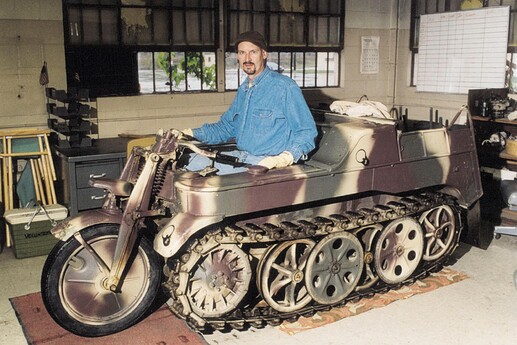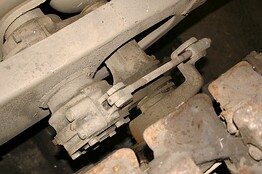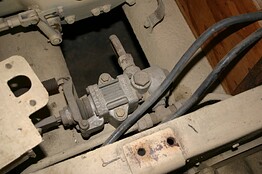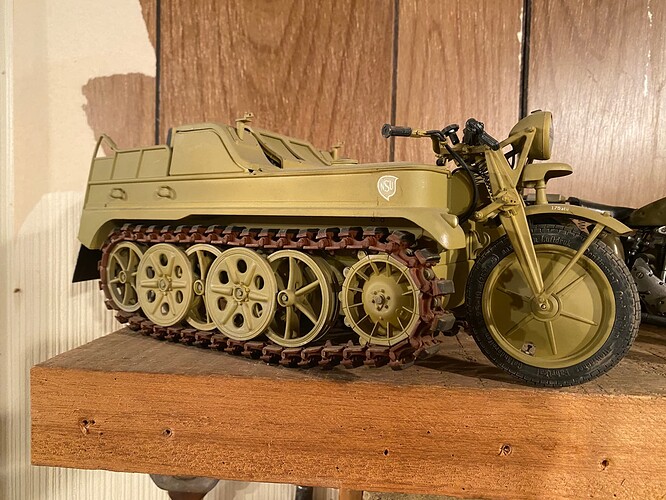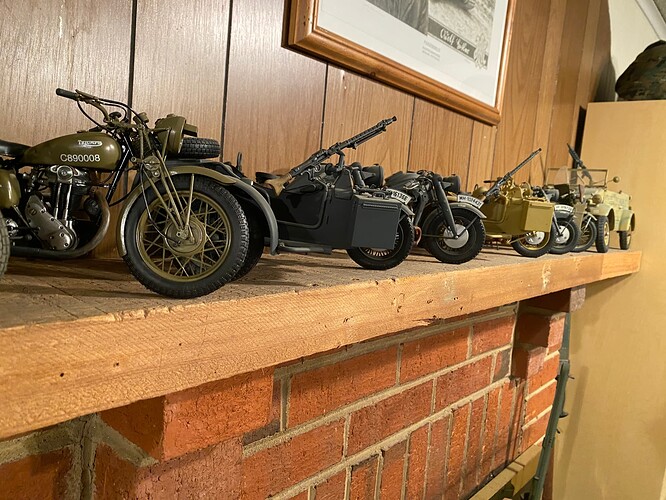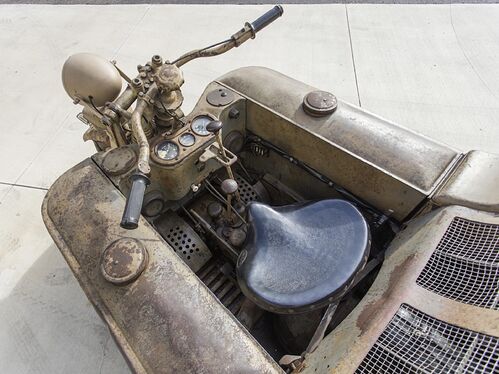I love watching the AusArmor workshop videos. It’s awesome to see how they get the vehicles working, or even just pieced together from individual plates!
For the sake of getting back to actually talking about the Sd. Kfz. 2 here are is one of my favorite Ketten photos:
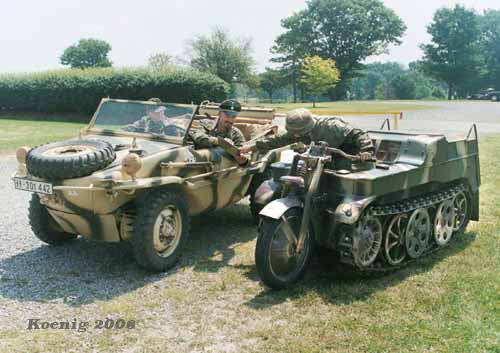
And a serious portrait of the Ketten seen here with Robert “Stick” Decker up!
I might want to make the camo scheme not just plain Dunkelgelb, so what are the standard designs on the Kettenkrad?
Also, in regular light, the Dunkelgelb from Vallejo looks alright, maybe just a touch too yellow, but we’ll see after weathering.
At the risk of being proved wrong I don’t think there were any “official” camo directives for the 2. Most/all were field painted with the green and red paint pastes being readily available to the troops and a paint spray gun always handy from one of the 251 halftrack’s engine driven compressor.
I know that the crews were just given the paint, but I’m wondering which schemes were more common.
Here are samples of 75+ year old German Dark Yellow as seen from under the removed floorboards of a 251 at the Patton Museum. This color as seen here may be faded with age but it has NOT been faded by sunlight. These colors ARE original.
You will note the valve assembly in the right hand photo is a slightly different shade. There was often significant variances in the paint shades from one sub-contractor to another. The gas tank was one shade and the air tanks another and so on.
Charles Lemons the Patton Museum Curator, has written at length on the subject of color variances within this particular vehicle.
Interesting photo Michael. Looks like a light Tan
There are also differences in the color due to how much the crew diluted it and if done in the factory, how much the factory diluted it.
Exactly!
The German desert color (North African shade) has more red in it but for the ETO the color is very much a washed out tan rather than an actual yellow.
This surprises most/all modelers. I know I was to learn this.
(I have an actual paint chip from this vehicle in an envelope but it has been long lost somewhere in the stash.)
I would expect factory colors to be the strongest and most correct as they used actual REAL paint, properly applied.
I finally took out my setup and am currently going over the base coat again in places where it is thin. I have a few questions:
- What color should I use for rubber? The vehicle won’t be factory fresh, so it can’t be straight black, right?
- What color are the exhausts painted on German vehicles, this one in particular? I plan on adding a rust wash later.
- What does the inside of the “cabin” look like? (Instruments, levers, etc…)
- Is it common to not paint areas that are hard to get to, and leave the dark primer as a fake shadow?
- What materials are the tracks made of?
This is the original ESCI 1/9 Kettenrad kit that I built in the early 80’s. It’s got many many mistakes as far as the build and paint goes. This is from the period when I though all tracks were Testors square bottle rust colored…
I was a Harley Davidson mechanic (100 years of tradition uninterrupted by progress) for the last 15 years of my career and I have probably built a half dozen more as gifts for coworkers and friends, without all the initial mistakes.
After ESCI , DML got the molds and the last one I built a couple of years ago was branded Revell of Germany. This is really a decent kit and is underrated along with all the rest of the ESCI 1/9 military motorcycle line.
For rubber I use a mixture of flat brown and black. It gives the rubber a faded greyish brown color with a warm feel
That’s cool, and it seems to work.
From the factory the exhausts would be over sprayed in the main body color - the level of rust you portray is up to you. (I usually rust them fully for a hint of color variance.)
For rubber & tire black I usually spray with a base coat to the main body color and then go over that with Model Masters “Gunmetal.” This paint comes already diluted for the airbrush but I use a brush to paint it on. It seems to give me a convincing sun faded shade of black that contains just a bit of the silvering that tires take on with some age and usage.
The vehicle will probably be FULLY covered with the main body color at the factory but the well down inside the driver’s compartment where the pedals, differential brakes and muddy boots are will quickly accumulate dirt, oil and grime so you are free to do as you will here.
Tracks are a dark iron so again the “Gunmetal” would be good here but the track blocks that contact the ground are actual rubber so matte black works well here.
I am looking now for my photo of the vehicle dashboard (with no luck) but you should be able to easily find that in a brief Google search. you just have to look.
Here is the best I could find on a quick 5 minute internet Google search.
(The best spot in this photo for a comparison color reference is right there between the smashed engine grills where a passenger’s butt has polished the area clean.)
I’m never gonna reach down into the well of that area, but the black base coat should take care of that, and with a figure in the way, who’s gonna notice?
Use some brushed in dust colored pigments and get rid of that solid black. Add some dirt. The only time black is black on a vehicle is in the first five minutes as the vehicle rolls off the assembly line! Or on a show car that has been polished and dusted right before the judges show up.
As you can see in the photo above everything down there is a dirty, silvery grey BUT NOT BLACK, so proceed accordingly.
Hi Michael, Maybe I was not clear in my ramble ![]()
I meant that being inside a base that was closed to the public made it just the same as a private collection.
Yes, Rob has many volunteers helping there, especially when it comes to getting qualified drivers on the day you can buy rides.
I’ll leave the tracks for later… I’ll make the tracks a dark dark gray, with the brown-black rubber color on the pads. Then I have to paint the rubber on the road wheels. ![]() I’ll work on the driving area for now.
I’ll work on the driving area for now.
Peter I understand the statement you are trying to make but . . .
A taxpayer funded but CLOSED to the public, historical collection bares no comparison to a privately funded collection that is sometimes open as the owner sees fit.
As a taxpayer I want FULL access to this huge and growing historical collection that I help support and once had full access to!
The arrangement you describe in you region fully portrays the Patton Museum before it was closed. We had monthly “ride days” pulling a different vehicle either out of the Museum itself or the Museum Motor Pool. The main collection was open to the public almost every day. And by asking the proper questions of the proper people or by becoming a Museum Volunteer you could gain access to the ENTIRE collection!
